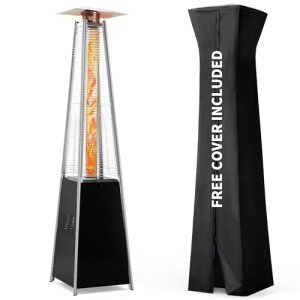Freestanding Stoves for Sale: The Ultimate Guide
Freestanding stoves, also called standalone stoves, are a progressively popular option for house owners aiming to improve the heating efficiency and visual appeal of their living spaces. They can be found in a myriad of designs, sizes, and fuel options, offering flexibility to satisfy the varied requirements of consumers. This post explores various elements of freestanding stoves, including their benefits, types, and functions, along with a guide to buying the ideal range.
What is a Freestanding Stove?
A freestanding range is a heating home appliance that is not developed into a wall or cabinets. Instead, it stands separately in a space and can be positioned in different places, making it a flexible heating option. These stoves can utilize different fuels, such as wood, gas, or pellets, and are developed to supply warmth while enhancing the ambiance of a space.
Benefits of Freestanding Stoves
Freestanding stoves are preferred for numerous reasons:
- Heating Efficiency: Freestanding stoves can create significant heat output while being fuel-efficient.
- Visual Appeal: With different styles ranging from traditional to contemporary, they can be a centerpiece in any room.
- Setup Flexibility: They can be positioned in diverse areas, enabling easy integration into existing home layouts.
- Cost-efficient: Many freestanding stoves are less costly to install compared to built-in systems.
- Heat Distribution: They can effectively disperse heat through the convection procedure, heating up the surrounding area.
Types of Freestanding Stoves
Freestanding stoves been available in numerous types based on their fuel source, consisting of:
| Type | Description |
|---|---|
| Wood Stoves | Use traditional wood logs for fuel, offering a rustic appeal and a distinct atmosphere. |
| Gas Stoves | Run utilizing natural gas or gas, supplying practical and manageable heating. |
| Pellet Stoves | Make use of compressed wood pellets as fuel, known for their efficiency and eco-friendliness. |
| Electric Stoves | Usage electrical power as a source of power, readily available in different styles, frequently including modern designs. |
Key Features to Consider
When looking for a freestanding stove, a number of features ought to be taken into account:
- Heat Output (BTUs): Consider the size of the area you wish to heat and select a range with a proper BTU score.
- Size and Design: Ensure the stove fits the space and matches the room's decoration.
- Fuel Type: Decide on the most convenient and economical fuel type for your household.
- Efficiency Ratings: Look for the stove's efficiency rankings (like EPA accreditation for wood stoves) to guarantee you're making an environmentally friendly option.
- Safety Features: Consider models with security functions such as automobile shut-off, heat resistant glass, or low-clearance choices.
Purchasing a Freestanding Stove
When thinking about buying a freestanding stove, it is necessary to evaluate numerous important elements to guarantee you invest carefully:
1. Spending plan
Setting a clear budget plan is important when purchasing a freestanding range. Costs can vary widely based on the type, brand name, and features:
- Basic Models: ₤ 800 - ₤ 1,500
- Mid-Range Models: ₤ 1,500 - ₤ 3,000
- High-End Models: ₤ 3,000 - ₤ 6,000+
2. Research Brands and Models
Comprehensive research study can help you reveal numerous alternatives in the market. Some noteworthy brands in the freestanding stove market include:
- Jøtul
- Quadrafire
- Regency
- Lopi
- Harman
3. Seek advice from Reviews
Read client evaluations and professional ratings online to get insights into the efficiency and reliability of various models.
4. Regional Regulations
Examine regional structure codes and guidelines concerning stove installation, particularly for wood and gas stoves, to make sure compliance.
5. Setup
Think about expert installation, especially for gas or wood models, as they typically need special ventilation or flue systems.
FAQs About Freestanding Stoves
1. Are freestanding Best Fireplace to use?
Yes, when effectively set up and kept, freestanding stoves are safe. Nevertheless, it's necessary to follow the manufacturer's guidelines and local codes.
2. How do I maintain my freestanding stove?
Regular upkeep includes cleaning the flue or chimney, looking for blockages, and making sure all parts are functioning properly. Annual assessments by a certified specialist are advised.
3. Can I use a freestanding stove as a primary heating source?
Yes, lots of house owners use freestanding stoves as primary heating sources, specifically in areas where traditional heating might be restricted.
4. Are freestanding stoves energy-efficient?
Many newer models are created for high efficiency, using better heat retention and lower emissions compared to older designs.
5. What is Best Fireplace Online -span of a freestanding range?
With appropriate upkeep, the average life-span of a top quality freestanding stove can be around 15 to 20 years.
Freestanding stoves are a practical and elegant alternative for heating homes. By comprehending the different types, advantages, and includes offered, house owners can make educated decisions that fit their choices and heating requirements. Whether opting for a wood, gas, pellet, or electric range, buying a quality model will offer warmth, atmosphere, and complete satisfaction for several years to come.

